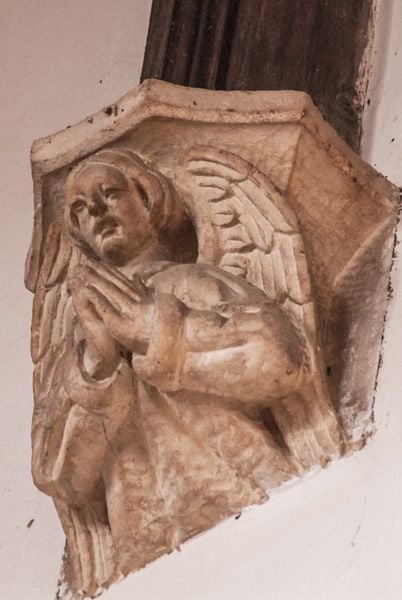St Peter And St Paul Church: Unveiling Centuries Of History And Legend In Long Compton
In the lovely village of Long Compton, on the edge of the Cotswold hills, you’ll find St Peter and St Paul Church.
This 13th-century church has an interesting history, filled with legends and stories of the past.

Legendary Beginnings
According to local legend, the site of St Peter and St Paul Church may have been home to Christian worship as early as the 5th century.
One particularly enduring tale involves St Augustine, who is said to have visited Long Compton in the late 6th century, possibly around 597 AD.

The story goes that St Augustine preached at the site of the current church and, during his visit, performed a miraculous act by raising a man from the dead.
If the legend is true, it would mean that a church stood here for about 150 years before Augustine’s visit, dating its origins to the mid-5th century.

The Current Church: A 13th-Century Gem
The present church of St Peter and St Paul is largely a product of the 13th century.
Built from local Cotswold stone, the church is a classic example of English medieval architecture.
Its layout includes a three-stage western tower, a nave (main hall), a north aisle, a chancel (the space around the altar), a south porch, and a small 15th-century chantry chapel on the south side.

The church’s south porch is one of its most striking features.
The porch dates back to the 14th century, and the original wooden doors, bearing the year 1621, still greet visitors today.
As you step through these ancient doors, you’ll notice a worn stone tomb containing the effigy of a woman.
This 14th-century effigy, now weathered by time, is believed to have originally been located inside the church.

The Nave and Chancel
The nave, or main body of the church, is the oldest part of the structure.
It likely dates from the early 13th century, with the chancel added later in the same century.
Around the year 1300, a north aisle was constructed, expanding the church’s capacity.

In the 15th century, the nave roof was raised to accommodate a clerestory—windows positioned above eye level that allowed more light to filter into the church.
One notable modern addition is a gallery at the west end of the church.
This gallery, made of gleaming wood and glass, provides extra seating for parishioners, though it does contrast sharply with the otherwise medieval interior.

Intriguing Carvings and Corbel Heads
One of the most fascinating aspects of St Peter and St Paul Church is the set of carved stone corbel heads that support the roof beams.
These corbels are intricately carved and depict a variety of figures, ranging from religious icons to ordinary people.

Perhaps the most captivating of these carvings is a woman wearing a full horned headdress, a fashion statement that would have been common in the mid-14th century.
Alongside her are several male figures, including one wearing a bishop’s mitre.
The bishop figure is shown holding unusual items, such as a hammer, pincers, and a horseshoe, suggesting a possible connection to local folklore or trades.

The Chantry Chapel
Attached to the south side of the chancel is a small chantry chapel, built in the 15th century.
Chantry chapels were typically founded to hold masses for the souls of the deceased, and although this chapel is now closed to visitors, its simple yet elegant Gothic architecture can still be admired from the outside.
It is a quiet and peaceful part of the church, blending seamlessly with the older structure.

The Unique Lych Gate
One of the most iconic features of St Peter and St Paul Church is its half-timbered lych gate.
This 17th-century structure was once part of a row of terraced cottages.
While the other cottages were demolished, the lych gate survived and was used as both a shop and a private residence.
In 1964, it was donated to the church, and today the upper room is used by the local historical society.
The thatched roof and timber construction make it a charming and distinctive entryway to the churchyard.

The Church Bells
The bell tower of St Peter and St Paul Church has its own rich history.
The original bells were cast by James Keene and his son Richard in the 17th century, with the two treble bells bearing their initials.
Over the centuries, the bells have been recast and rehung several times.
Notably, the third and fifth bells were recast in 1924 by Thomas Bond & Sons, and the entire set was retuned and rehung in 1956-7 by Taylors of Loughborough.
The church also features an ancient Sanctus bell, located in a small turret above the chancel arch.
This 16th-century bell, measuring just over 13 inches in diameter, is a rare and valuable artifact from the church’s past.

The Surrounding Village
Long Compton itself is a beautiful village, with its mix of Cotswold stone cottages, Georgian architecture, and thatched roofs.
The village stretches along the main road, and visitors can enjoy a leisurely walk past historic buildings, including the Georgian rectory located not far from the church.
A field to the west of the church is believed to be the site of the original village, though today only faint bumps and dips in the grass mark its location.


